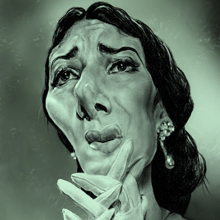
Históricamente, no hay duda de que Francia y Gran Bretaña, con sus artistas y su prensa, fueron los principales impulsores de lo que hoy se conoce como caricaturismo editorial, la caricatura satírica de la prensa. Esto no quita mérito al papel pionero de Italia y sus artistas en la génesis del arte de la caricatura. Sin olvidar a los hermanos Carraci (Aníbal y Agostino - siglo XVII) que desarrollaron los «divertienti» de «caricare» o facies, para encontrar la esencia de la belleza y la realidad en el contraste de las exageraciones, estudio que llevaría a la profesionalización de la primeros caricaturistas, los italianos Carlo Maratta (1625-1713) y Pier Leone Ghezzi (1674-1755), también hay que hablar de los estudios de personajes de Leonardo Da Vinci (1452-1519), Giovanni Bernini (1598-1680). «Me gusta recordar que las raíces del humor - nos dice Mariagrazia Durante, es decir, el artista "Gio" - derivan de las pinturas de maestros del pasado: el mismo Leonardo da Vinci, que, a través de los estudios anatómicos de sus contemporâneos. Personajes que combinan magistralmente realismo y crítica social. Entre los autores clásicos mencionaría naturalmente también a Arcimboldo, Bernini y Giambattista Tiepolo como pioneros de este género artístico».
Para comprender mejor lo que está sucediendo en la Italia contemporánea, hablamos con "Gio", un artista que poco a poco se ha ido consolidando a nivel internacional.
Como decía, en Italia existe una tradición milenaria ligada al humor, en la literatura, el dibujo, el cine... La antigua Roma fue la madre de Saturnalis y otras formas de utilizar el humor en la vida cotidiana. ¿Se puede decir que el humor italiano, con esta ascendencia, es diferente?
Gio - «La verdadera sátira como género independiente nació en Italia, a raíz de la vecina Francia, gracias a los periódicos de la segunda mitad del año 800, fiel espejo de la historia de nuestro país. Dieron voz al movimiento Risorgimento y a los acontecimientos políticos posteriores, desde la Primera Guerra Mundial hasta el fascismo y el nacimiento de la República hasta el día de hoy.
No sé si realmente existe un humor italiano porque el mundo del 'humor' es muy diverso, pero creo que los artistas de nuestro país están influenciados por las tradiciones clásicas y humanistas del pasado, incluso transfigurandolas a la luz de una visión más sensibilidad moderna, a menudo neorrealista. También me siento muy cerca de esta visión».
OMS - Italia, geográficamente, es un país grande y los humores deben ser muy diferentes entre el sur, el centro o el norte, o incluso entre el pueblo y la ciudad. ¿Sientes estas diferencias de humor en la creación humorística?
Gio - «Creo que, a pesar de la emigración interna del sur al norte, y de la mezcla de costumbres, todavía hay muchas características históricas, pero por supuesto puede tener más validez como regla general además de la historia personal de cada uno. Nosotros, en el Sur, tendemos a ser más apasionados que en el Norte de Italia y quizás incluso más abiertos, pero no quiero caer en clichés.
Por otro lado, la diferencia entre las ciudades y las zonas rurales es mucho menor gracias al fácil movimiento de personas por trabajo, diversión o cualquier otro motivo. De hecho, la gente de las ciudades muchas veces elige vivir en países más pequeños porque la calidad de vida es mejor, por lo que gracias a internet no hay problemas de comunicación».
OMS - ¿Existe en Italia un “personaje”, un tipo preferido para ser “víctimas” de la comedia anecdótica?
Gio - «Los más atacados suelen ser los políticos en el poder, pero también los más regresivos, aquellos que quisieran borrar los numerosos derechos adquiridos.
Luego, por supuesto, está la tradición de atacar las costumbres del italiano medio, como la de "salir siempre en ayuda de los vencedores", el resurgimiento del racismo, el machismo progresivo, la burocracia oxidada, el acoso a los últimos, el amor a comida o la capacidad de contentarse con la imaginación».
OMS - Estos son precisamente los temas que ha explorado el cine italiano. Frederico Fellini y Ettore Scola comenzaron su carrera profesional como diseñadores de humor, convirtiéndose más tarde en cineastas de gran éxito, que acabaron explorando estos estereotipos del humor italiano. ¿Es la ironía neorrealista una imagen realista de la tragicomedia que es la vida italiana, o son caricaturas demasiado dramáticas, casi una «commedia dell'Arte»? Hasta Totó tiene un humor triste, como Benigni. La tristeza es dominante en estos estados de ánimo. ¿Está también en tu humor, en tu forma de reírte de la vida?
Gio - «En mi opinión, la mayoría de los italianos mantuvieron estas características. Esto me recuerda una frase de uno de mis grandes compatriotas, Ennio Flaiano, excelente periodista y guionista de cine con Fellini, Monicelli, Soldados: "Los italianos siempre están dispuestos a correr en ayuda de los vencedores", pero también las otras bellas uno: "De niño fui anarquista, ahora me doy cuenta de que uno puede ser subversivo, con sólo pedir que las leyes del Estado sean respetadas por quienes gobiernan". Son pensamientos de hace 50 años, ¡pero siguen siendo muy actuales! Con este inmenso y hermoso fondo es difícil no seguir riendo amargamente».
En otras palabras, es un estado de ánimo generalizado... “Lamentablemente, sí. Creo que siempre está muy extendida la convicción de que el conformismo proporciona una especie de seguridad social y de aceptación a cambio de "sólo una pequeña renuncia" a pensar con la propia cabeza».
OMS - Por ejemplo: ¿Puedes reírte de la mafia?
Gio - «No sólo se puede hacer, es absolutamente necesario, sobre todo porque la palabra "mafia" no se refiere simplemente a hechos trágicos en las noticias, sobre los cuales poco hay que ser irónico y que hay que perseguir con toda tenacidad. Por otro lado, el humor puede ayudar mucho en esta lucha, ya que hay que sacudir conciencias honestas y dormidas, para denunciar el sistema generalizado que alimenta a la propia mafia, cuando ya no se sigue la legalidad, sino sólo el consenso».
OMS - Hablando más concretamente del humor gráfico. ¿Por qué navegas en este océano de estados de ánimo? ¿Por la educación, por la genética, por el italianismo?
Gio - «Estoy seguro de que hay un poco de eso en la base de mis opciones. Dibujar para mí es "des-soñar", es decir, soñar con la felicidad individual junto al cambio social, un mundo más justo. Mi madre me dio el don de la creatividad y mi padre el don de la terquedad y la dignidad, una mezcla fatal y muchas veces incómoda que representa mis raíces.
Primero me hice arquitecta, pero nunca abandoné esos sueños y gracias a internet, en los años 2000, pude darme a conocer y dar a conocer mis obras no sólo en el país sino también en el extranjero».
OMS - ¿Quiénes son tus ídolos, modelos de inspiración, son italianos o de otras partes del mundo?
Gio - «Me gusta estudiar tanto a los grandes maestros del presente como del pasado. Sería artificial, sin embargo, separar el mundo de la caricatura y del dibujo humorístico del de la pintura. Siempre me ha gustado la libertad de Toulouse Lautrec y Schiele, pero también la fuerza de las pinceladas de Giovanni Boldini, Lucian Freud y Safet Zec.
Pero sobre todo me gustaría mencionar a un gran maestro italiano del dibujo humorístico, Marco De Angelis, cuyo genio artístico y su capacidad de reinventarse constantemente, inalterable en el tiempo, adoro».
OMS - Italia es la tierra de todos estos grandes maestros, una gran fuente de inspiración importante en el enriquecimiento estético de este arte que no es sólo un juego satírico del cómic, y como ya has mencionado, esta tradición de cartoons se remonta al siglo XIX. siglo.
Gio - «Bien. En Italia existe una antigua tradición de dibujo humorístico, al menos desde el siglo XIX, desde Galantara hasta Scalarini, Teja, Guareschi, Attalo, Barbara, Cavallo, Gruppo Stanza, Coco, Jacovitti, por nombrar algunos, pero muy grandes.
Lo que desgraciadamente cada vez es más actual es la imposibilidad de publicar en prensa, sustituyendo esta actividad por exposiciones en festivales, museos... Esto se debe no sólo a razones económicas, sino también a la aprobación de la oferta cultural».
OMS - Eres una mujer, una artista en un género en el que no siempre ha sido fácil para las mujeres entrar, sobre todo en la prensa, que suele ser más machista. Esta barrera tradicional no existe tanto en este entorno de competencia internacional. ¿Cómo ha sido tu lucha por entrar en este universo sexista y dominado por hombres?
Gio - «Debo decir que la mayoría de mis compañeros cómicos no son machistas, precisamente por la honestidad intelectual que sin duda es inherente a esta profesión.
El hecho mismo de poner en juego el hecho de ser mujer, de ser comediante, al menos por mi parte, no es correcto, y nunca se deben privilegiar las cuestiones de género. De hecho, no creo que sea posible reconocer a priori, por ejemplo, si un dibujo fue realizado por un hombre o una mujer.
Lo que más sufrimos es quizás la falta de oportunidades y espacios diseñados solo para nosotros los comediantes para que podamos expresarnos juntos libremente, expresar nuestro punto de vista y experiencias diferentes. Quizás por eso fueron tan importantes mi determinación y mi terquedad».
OMS - ¿Tienen las mujeres italianas un particular sentido del humor?
Gio - «Creo que la mujer italiana se encuentra todavía en medio del abismo, entre la incertidumbre de recuperar completamente su vida y el deseo de seguir siendo juzgada por la sociedad como buena esposa, madre, trabajadora social y todos los roles estándar que» normalmente" puede funcionar. También hay un mensaje cultural de que las mujeres tienen que hacer una elección sustancialmente alternativa, no complementaria, entre sus sueños y su vida».
OMS - ¿Cómo ve el futuro del humor gráfico en Italia? «Creo que debido a la globalización el futuro del humor gráfico, quizás con algunas islas felices, será un poco parecido, en todas partes.
Internet y la globalización en general brindan la oportunidad de acercarse más fácilmente a este mundo incluso para los más jóvenes, y esto ciertamente puede ser positivo, pero el lado negativo es y será una menor calidad de la producción, probablemente acompañada de un cierto conformismo cultural. Por otro lado, el humor gráfico es un espejo de nuestra sociedad y es importante que nunca olviden su función principal: la de resistir a la injusticia».
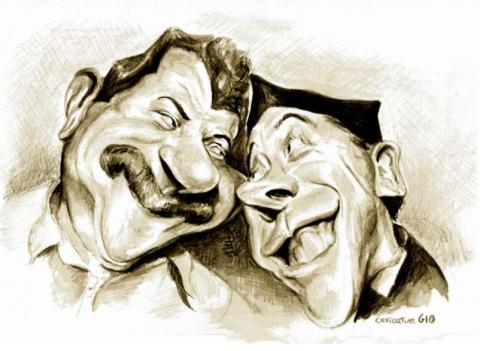
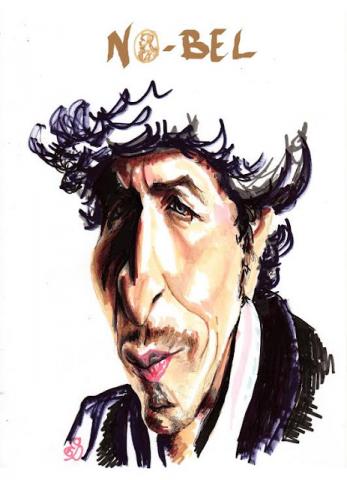
Bob Dylan
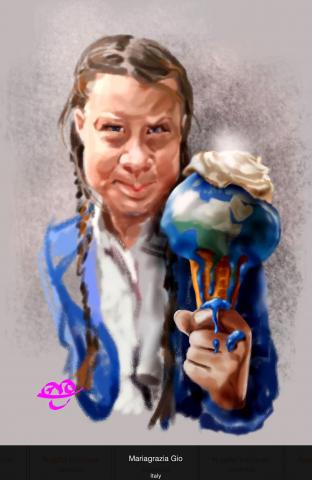
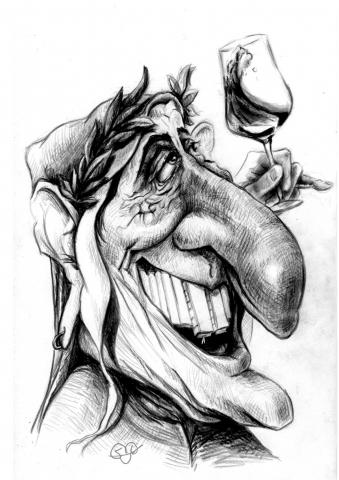
Dante Poeta divino
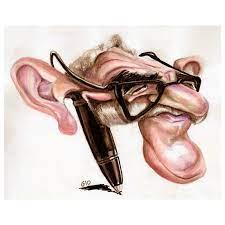
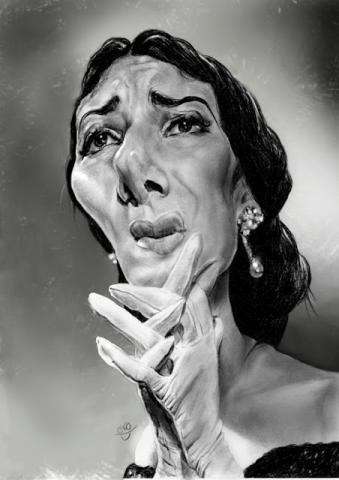
Maria Callas. Premio Rino Montanari, II World Humor Award
Humors of the World | Italy | Mariagrazia "Gio" Durante
By Osvaldo Macedo de Sousa
Historically, there is no doubt that France and Great Britain, with their artists and press, were the main driving force behind what is now known as editorial cartoonism, the satirical caricature of the press. This does not detract from Italy and its artists' pioneering role in the genesis of the art of caricature. Not forgetting the Carraci brothers (Aníbal and Agostino - 17th century) who developed the «divertimenti» of «caricare» or facies, to find the essence of beauty and reality in the contrast of exaggerations, a study that would lead to the professionalization of the first caricaturists, the Italians Carlo Maratta (1625-1713) and Pier Leone Ghezzi (1674-1755), we also have to talk about the character studies of Leonardo Da Vinci (1452-1519), Giovanni Bernini (1598-1680)... «I I like to remember that the roots of humor - Mariagrazia Durante tells us, that is, the artist "Gio" - derive from the paintings of past masters: the same Leonardo da Vinci, who, through the anatomical studies of his contemporary characters, masterfully combined realism and social criticism. Among the classic authors I would naturally also mention Arcimboldo, Bernini and Giambattista Tiepolo as pioneers of this artistic genre».
To better understand what is happening in contemporary Italy, we spoke to "Gio", an artist who has gradually established herself internationally.
As I was saying, in Italy there is an ancient tradition linked to humor, in literature, drawing, cinema... Ancient Rome was the mother of Saturnalis and other ways of using humor in everyday life. Can it be said that Italian humor, with this ancestry, is different?
Gio - «True satire as an independent genre was born in Italy, in the wake of neighboring France, thanks to the newspapers of the second half of the year 800, a true mirror of the history of our country. They gave voice to the Risorgimento movement and subsequent political events from World War I to fascism to the birth of the Republic to this day.
I don't know if there really is an Italian humor because the world of 'humor' is very diverse, but I think our country's artists are influenced by the classical and humanist traditions of the past, even transfiguring them in the light of a more modern sensibility. , often neorealist. I also feel very close to this vision».
OMS - Italy, geographically, is a large country and the moods must be very different between the south, the center or the north, or even between the village and the city. Do you feel these differences in humor in humorous creation?
Gio - «I believe that, despite internal emigration from south to north, and mixing of customs, there are still many historical characteristics, but of course it can be more valid as a general rule in addition to everyone's personal history. We, in the South, tend to be more passionate than in the North of Italy and perhaps even more open, but I don't want to fall into clichés.
On the other hand, the difference between cities and rural areas is much smaller thanks to the easy movement of people for work, fun or otherwise. In fact, people from cities often choose to live in smaller countries because the quality of life is better, so thanks to the internet there are no communication problems».
OMS - In Italy, is there a “character”, a preferred type to be the “victims” of anecdotal comedy?
Gio - «Those most targeted are usually the politicians in power, but also the most regressive, those who would like to erase the many acquired rights.
Then, of course, there is the tradition of attacking the customs of the average Italian, such as always "coming to the aid of the victors", the resurgence of racism, creeping machismo, rusty bureaucracy, harassment of the least, the love of food or the ability to be content with imagination».
OMS - These are precisely the themes that Italian cinema has explored. Frederico Fellini and Ettore Scola began their professional careers as humorous designers, later becoming highly successful filmmakers, who ended up exploring these stereotypes of Italian humor. Is neo-realist irony a realistic image of the tragicomedy that is Italian life, or are they overly dramatic caricatures almost «commedia dell'Arte? Even Totó has a sad mood, like Benigni. Sadness is dominant in these moods. Is it also in your humor, in the way you laugh at life?
Gio - «In my opinion, the majority of Italians maintained these characteristics. This reminds me of a phrase from one of my great countrymen, Ennio Flaiano, an excellent journalist and film writer with Fellini, Monicelli, Soldiers: "The Italians are always ready to rush to the aid of the winners", but also the other beautiful one: "As a child, I was an anarchist, now I realize that one can be subversive, just asking that the laws of the State be respected by those who govern." These are thoughts from 50 years ago, but they are still very current! With this immense and beautiful background it is difficult not to continue laughing bitterly».
In other words, it is a generalized state of mind.... “Unfortunately, yes. I think there is always a widespread conviction that conformity provides a kind of social security and acceptance in exchange for "just the small renunciation" to think with one's own head».
OMS - For example: Can you laugh at the Mafia?
Gio - «Not only can it be done, it is absolutely necessary, especially because the word "mafia" does not just refer to tragic facts in the news, about which there is little to be ironic and which must be pursued with all tenacity. On the other hand, humor can do a lot in this fight, since honest and dormant consciences have to be shaken, in order to denounce the generalized system that feeds the mafia itself, when legality is no longer followed, but only consensus» .
OMS - Speaking more specifically about graphic humor. Why do you sail in this ocean of moods? By education, by genetics, by Italianism?
Gio - «I'm sure there's a little of that at the basis of my options. Drawing for me is "de-dreaming", that is, dreaming of individual happiness together with social change, a fairer world. My mother gave me the gift of creativity and my father the gift of stubbornness and dignity, a fatal and often uncomfortable mix that represents my roots.
First I became an architect, but I never abandoned those dreams and thanks to the internet, in the 2000s, I was able to make myself and my works known not only in the country but also abroad».
OMS - Who are your idols, inspirational models, are they Italian or from other parts of the world?
Gio - «I like to study both the great masters of the present and the past. It would be artificial, however, to separate the world of caricature and humorous drawing from that of painting. I've always loved the freedom of Toulouse Lautrec and Schiele, but also the power of the brushstrokes of Giovanni Boldini, Lucian Freud and Safet Zec.
But above all I would like to mention a great Italian master of humorous drawing, Marco De Angelis, whose artistic genius and his ability to constantly reinvent himself, unchanged over time, I adore».
OMS - Italy is the land of all these great masters, a great source of inspiration that is important in the aesthetic enrichment of this art that is not just a satirical game of comics, and as you have already mentioned, this cartoon tradition dates back to the 19th century.
Gio - "Right. In Italy there is an ancient tradition of humorous drawing, at least since the 800s, from Galantara to Scalarini, Teja, Guareschi, Attalo, Barbara, Cavallo, Gruppo Stanza, Coco, Jacovitti, to name a few, but very great ones.
What is unfortunately becoming increasingly current is the inability to publish in the press, replacing this activity with exhibition at festivals, museums... This is due not only to economic reasons, but also to the approval of the offer cultural".
OMS - You are a woman, an artist in a genre where it has not always been easy for women to enter, especially in the press, which is usually more sexist. This traditional barrier does not exist as much in this international competition environment. What has your struggle been like to enter this sexist and male-dominated universe?
Gio - «I must say that the majority of my fellow comedians are not sexist chauvinists, precisely because of the intellectual honesty that is certainly inherent to this profession.
The very fact of putting the fact of being a woman, of being a comedian, at stake, at least on my part, is not correct, and gender issues should never be privileged. In fact, I don't think it's possible to recognize a priori, for example, whether a drawing was made by a man or a woman.
What we suffer most is perhaps the lack of opportunities and spaces designed just for us comedians so that we can express ourselves freely together, express our point of view and different experiences. Maybe that's why my determination and stubbornness were so important».
OMS - Do Italian women have a particular sense of humor?
Gio - «I think that the Italian woman is still in the middle of the shoal, between the uncertainty of completely recovering her life and the desire to continue to be judged by society as a good wife, mother, social worker and all the standard roles that "normally" can perform. There is also a cultural message that women have to make a substantially alternative, not complementary, choice between their dreams and life».
OMS - How do you see the future of graphic humor in Italy?
Gio - «I believe that due to globalization the future of graphic humor, perhaps with some happy islands, will be a little similar, everywhere.
The Internet and globalization in general give the opportunity to approach this world more easily even for the youngest, and this can certainly be positive, but the negative side is, and will be, a lower quality of production, probably accompanied by a certain cultural conformism. On the other hand, graphic humor is a mirror of our society, and it is important that they never forget their main function - that of resisting injustice».
